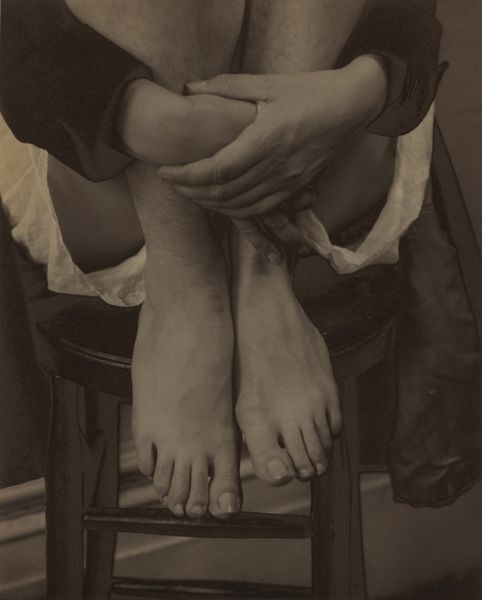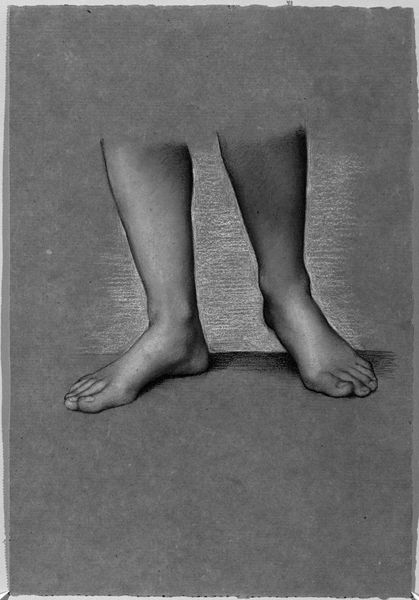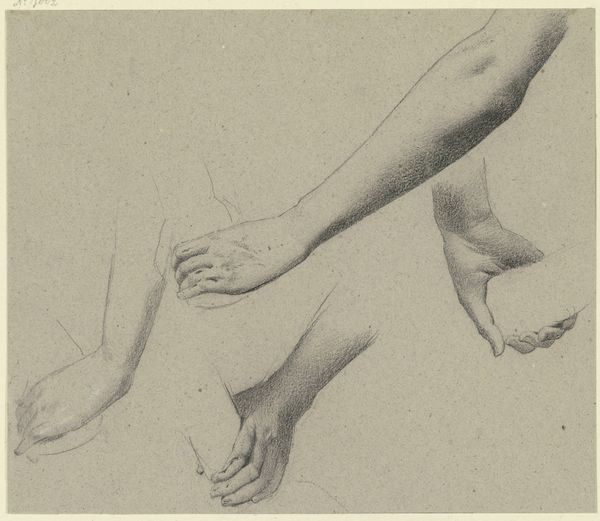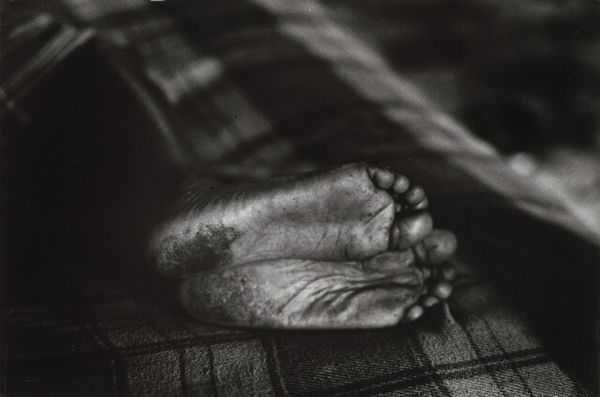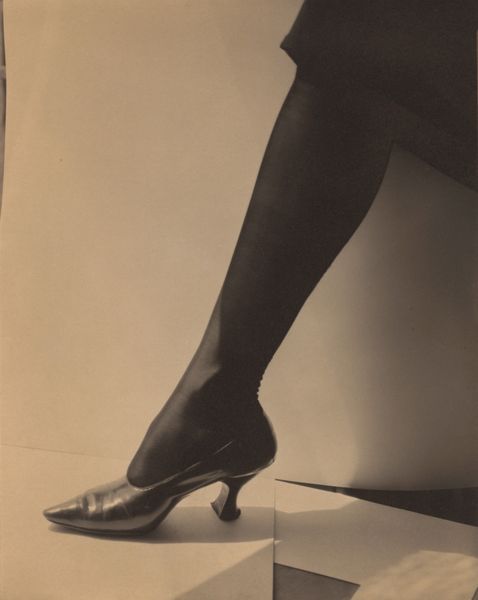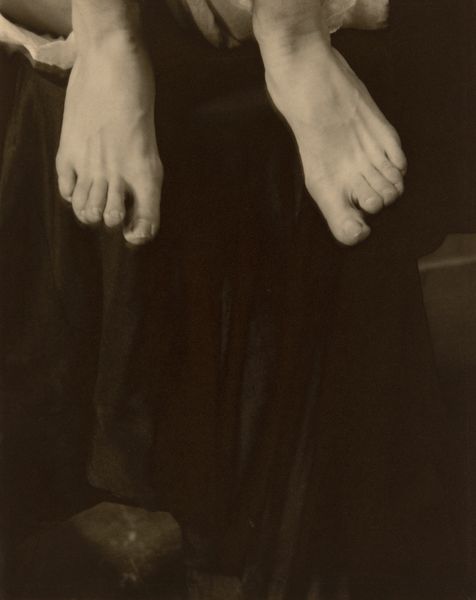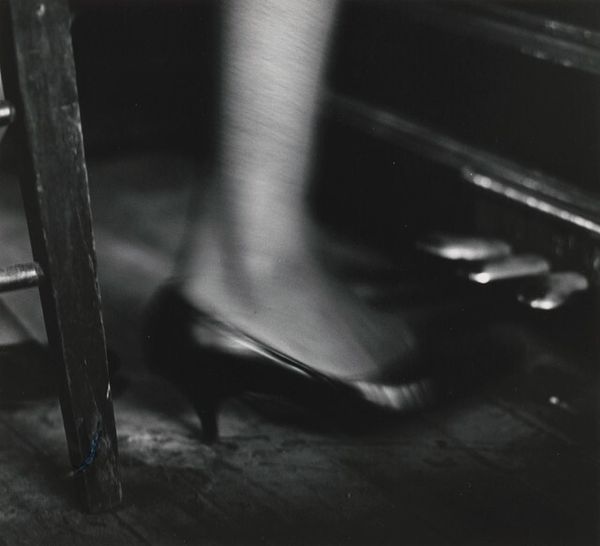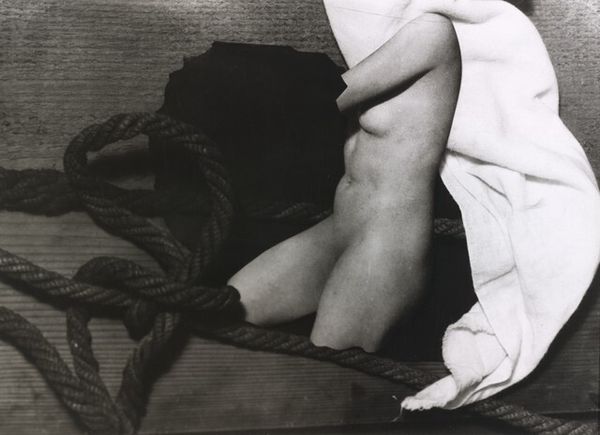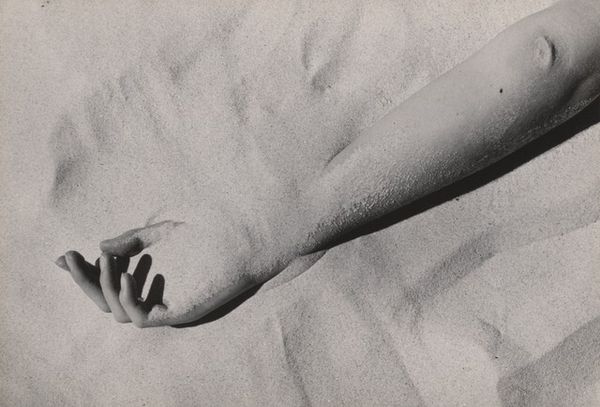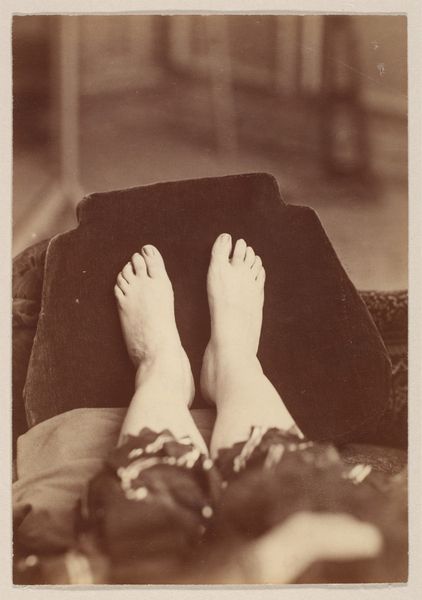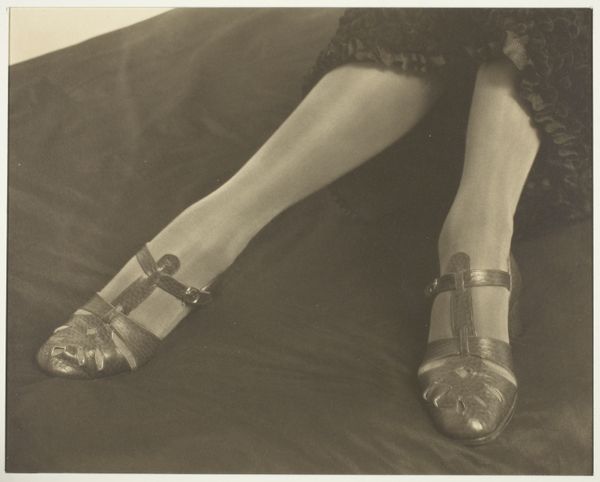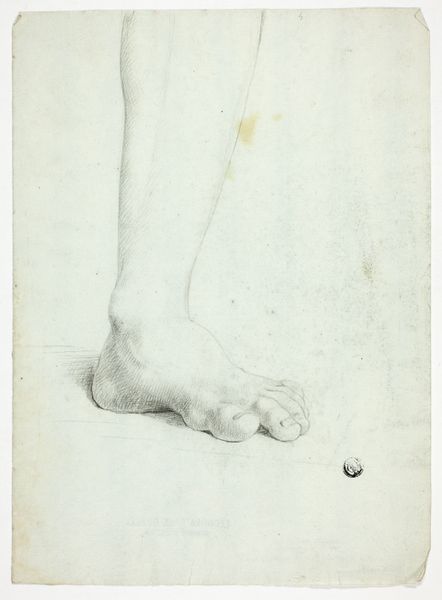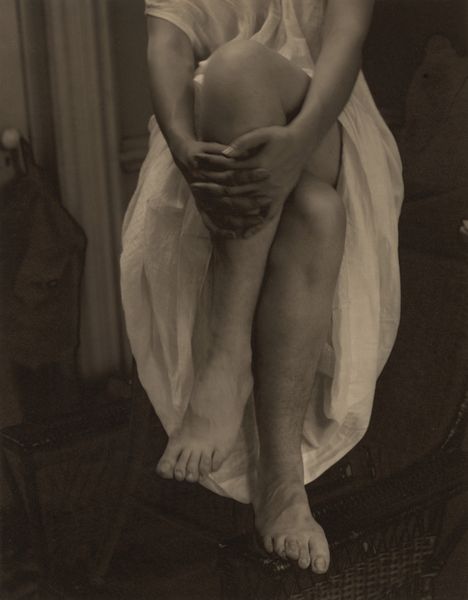
photography, gelatin-silver-print
#
portrait
#
black and white photography
#
black and white format
#
photography
#
black and white
#
gelatin-silver-print
#
monochrome photography
#
ashcan-school
#
monochrome
#
realism
#
monochrome
Dimensions: sheet (trimmed to image): 8.9 × 11.4 cm (3 1/2 × 4 1/2 in.) mount: 33.8 × 27.2 cm (13 5/16 × 10 11/16 in.)
Copyright: National Gallery of Art: CC0 1.0
Curator: Well, first impressions? To me, it feels like a captured moment of precarious balance, of hesitantly stepping into the unknown. Editor: I totally get that feeling. And talk about intimate! I'm immediately struck by how stark it is. It feels almost clinical, the way the light catches the details... almost too honest. It definitely has a story to tell, these aren't just feet. Curator: Precisely. This gelatin-silver print, entitled "Rebecca Salsbury Strand," was captured by Alfred Stieglitz in 1922. Beyond the image itself, let’s delve into Stieglitz's broader focus within the Ashcan school, his desire to mirror and capture the mundane and sometimes shocking realities that underpinned American life. These subjects have been traditionally ignored by academic or institutional interest at the time. Editor: Rebecca, eh? The details really get you thinking. Is she testing the water? Meditative even. The graininess adds to the feeling that it's caught in time, like an archeological fragment. There's real emotional texture in the black and white too... that lack of color is so vital in directing us, as viewers, to her perspective at the time of capture. Curator: Absolutely. The photo resonates with the aesthetic ideals of its time but also hints at something more, a study of the body beyond idealized forms, perhaps even touching on then-emerging feminist concepts regarding autonomy and personal identity through intimate portrayal. These were ideas actively discussed and pioneered around Stieglitz during this era. How might such a portrait be a subtle assertion? Editor: Wow. Looking at it with all that in mind... it's almost radical. Forget dainty portraits, forget ideal poses, he hones in on the very foundations she treads on, so to speak! To put so much faith and weight on her foundation to ground her as an individual... Makes one think of the sheer audacity of existing and occupying space. Curator: Indeed, there are myriad of avenues to consider. Thanks to photographic artifacts like this we are invited to contemplate and contextualize ourselves in relation to those images produced nearly a century ago, so as to continuously assess, refine and reshape our place in an ever changing world. Editor: It has legs. A testament to simplicity.
Comments
No comments
Be the first to comment and join the conversation on the ultimate creative platform.
